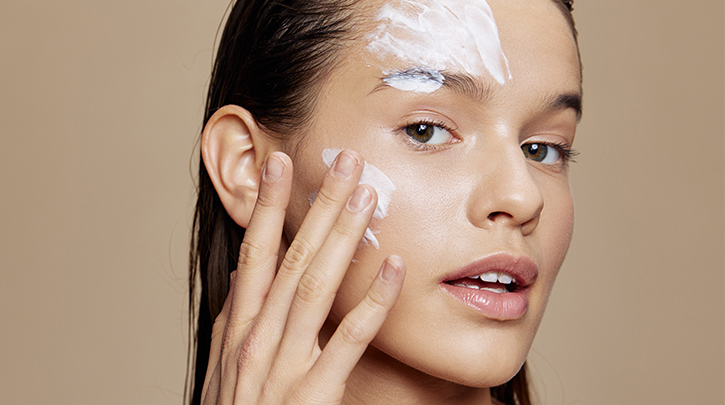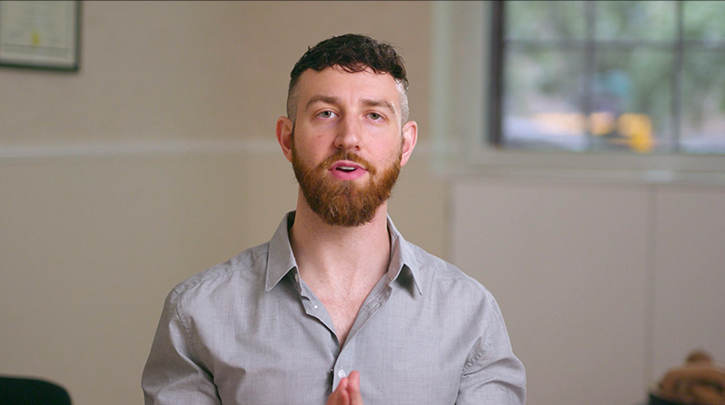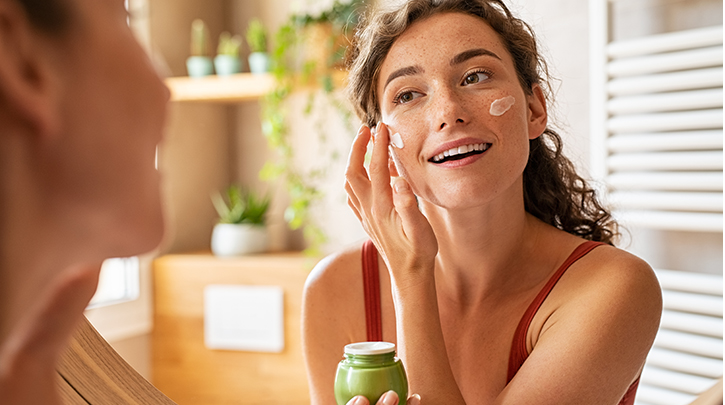

Skin resurfacing treatments have become increasingly popular in recent years, thanks to advanced technology that helps correct signs of skin damage such as scars, visible pores, deep wrinkles, stretch marks, and uneven skin texture. One such technology is our Venus Viva™ MD featuring NanoFractional Radio Frequency technology, which is a non-invasive and safe way to rejuvenate your skin without the downtime associated with more invasive procedures.
Achieve total skin renewal with one of the most sought-after treatments for improving the overall appearance of the skin and resolving issues such as scars, wrinkles, enlarged pores, or stretch marks. Skin resurfacing treatments stimulate the skin’s natural healing mechanism by delivering NanoFractional Radio Frequency energy below the skin’s surface layers, in turn promoting collagen and elastin production. Venus Viva™ MD works with tiny pins that safely deliver heat (via NanoFractional Radio Frequency) through the skin’s surface. This creates tiny micro-dermal wounds, which the body naturally heals on its own. This process repairs signs of skin damage visible on the surface of the skin. Since the wounds are so small, the treatment is much more comfortable than traditional CO2 lasers, while still producing incredibly visible results. The result is a brighter, smoother complexion. Not only that, but the treatments work to correct scar tissue, improve textural irregularities of the skin, resolve hyperpigmentation and sun spots, and reverse acne scarring.
If you're considering this treatment or have recently undergone it, it's important to understand the post-treatment care necessary for optimal results. Here's your complete guide to post-treatment care after NanoFractional Radio Frequency skin resurfacing.
Avoid touching or scratching the treatment area. For the first 24 hours, only apply products that are expressly recommended by your treatment provider, as there are many topicals that could cause severe irritation.
Apply sunscreen after 24 hours, preferably one without chemicals, to protect your skin from further damage. Sunscreen with an SPF of at least 30 is recommended.
Apply hydrating, soothing, and reparative products to help calm and repair your skin once your treatment provider says it's safe to do so, usually a few days to one week post-treatment. Some examples include:
- Aloe vera: This plant extract has anti-inflammatory properties and can help soothe redness and irritation.
- Peptides: These proteins stimulate collagen production and can help improve the overall health of your skin.
- Ceramides: These lipids help maintain the skin's barrier function, keeping moisture in and environmental aggressors out.
- Antioxidants: Help protect your skin from free radical damage caused by sun exposure, pollution, and other factors.
- Hyaluronic acid: This humectant can attract and retain water, helping to keep your skin hydrated.
Avoid chemical and physical exfoliants until your treatment provider has specified it's ok to use them, including retinol. Your skin may still be very sensitive for the first few days or week post-treatment.
Avoid potent products like Vitamin C, as your skin may still be very sensitive for the first few days or week post-treatment. Potent ingredients like Vitamin C can have an irritating effect on sensitive skin.
Avoid sun exposure or tanning, as your skin will be more sensitive to UV rays. It's best to stay out of the sun and wear protective clothing and hats when you do go outside.
Avoid hot baths, steam rooms, and saunas until your treatment provider gives you the green light. Heat can cause increased blood flow to the treatment area, which may lead to swelling and discomfort.
Avoid rigorous exercise for 48 hours post-treatment. Exercise increases blood flow and can cause swelling and discomfort.
By following these guidelines, you can ensure that your skin resurfacing treatment is as effective as possible and that your skin looks and feels its best post-treatment. If you have any questions or concerns, don't hesitate to reach out to your treatment provider for further guidance.
Find a certified treatment provider near you.



Search below to find a provider near you and to learn about our non-surgicial treatments with ARTAS®, NeoGraft®, Venus Bliss™, Venus Versa™, Venus Legacy™, Venus Velocity™, Venus Viva™, Venus Freeze Plus™, Venus Glow™, and Venus Heal™.
For more information call: +27 31 535 7241 // [email protected] // Liberty Life Building, 21 Aurora Drive, Umhlanga Ridge Durban, 4301, South Africa
REGULATORY CLEARANCES [ More ]
Venus Versa™ has CE Mark as a multi-application device intended to be used in aesthetic and cosmetic procedures. The SR515 and SR580 applicators have CE Mark for the treatment of benign pigmented epidermal and cutaneous lesions and treatment of benign cutaneous vascular lesions. The HR650/HR650XL and HR690/HR690XL applicators have CE Mark for the removal of unwanted hair and to effect stable long-term or permanent hair reduction for Fitzpatrick skin types I-IV. The AC Dual applicator has CE Mark for the treatment of acne vulgaris. The DiamondPolar™ applicator has CE Mark for non-invasive treatment of moderate to severe facial wrinkles and rhytides on females with Fitzpatrick skin types I-IV. The OctiPolar™ applicator on the Venus Versa™ system has CE Mark for temporary body contouring via skin tightening, circumferential reduction, and cellulite reduction. The NanoFractional RF™ (Viva) applicator has CE Mark for dermatological procedures requiring ablation and resurfacing of the skin.
NeoGraft® 2.0 has CE Mark with indication for use in suction-assisted follicular extraction and re-implantation for males and females.
Venus Epileve™ has CE Mark for hair removal, permanent hair reduction (defined as the long-term stable reduction in the number of hairs re-growing when measured at 6, 9 and 12 months after the completion of a treatment regimen), and the treatment of pseudofolliculitis barbae for all Fitzpatrick skin types. Venus Epileve™ is also CE-Marked for hirsutism.
Venus Legacy™ has CE Mark for the temporary increase of skin tightening, circumferential reduction, cellulite reduction, and wrinkle reduction.
Venus Velocity™ has CE Mark for hair removal, permanent hair reduction (defined as the long-term stable reduction in the number of hairs re-growing when measured at 6, 9 and 12 months after the completion of a treatment regimen), and the treatment of pseudofolliculitis barbae for all Fitzpatrick skin types.
Venus Viva™ has CE Mark for the use in dermatologic and general surgical procedures requiring ablation and resurfacing of the skin, and the treatment of moderate to severe facial wrinkles and rhytides in Fitzpatrick skin types I-IV with the DiamondPolar™ applicator.
Venus Freeze Plus™ has CE Mark for treatment of moderate to severe facial wrinkles and rhytides using the DiamondPolar™ applicator, and CE Mark for the treatment of cellulite reduction, increase of skin tightening, and temporary circumferential reduction on the OctiPolar™ applicator.
Venus Freeze™ has CE Mark for treatment of moderate to severe facial wrinkles and rhytides using the DiamondPolar™ applicator, and CE Mark for the treatment of cellulite reduction, increase of skin tightening, and temporary circumferential reduction on the OctiPolar™ applicator.
Venus Glow™ provides a dermal rejuvenation treatment that works to open up and deep-clean pores. Venus Concept is the exclusive distributor for Venus Glow™.
Copyright © 2025 Venus Concept. All rights reserved.
You are entering our website. For other country/regions and language options, please click the button below.
Click HereAre you a physician or aesthetician? Please visit our medical and aesthetic professional website to learn more.
Click Here